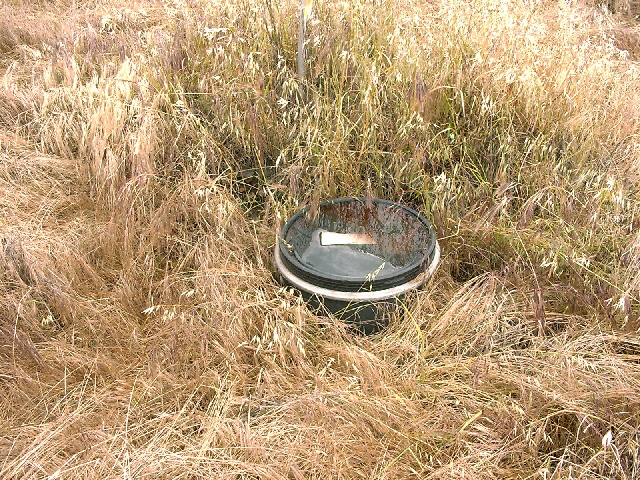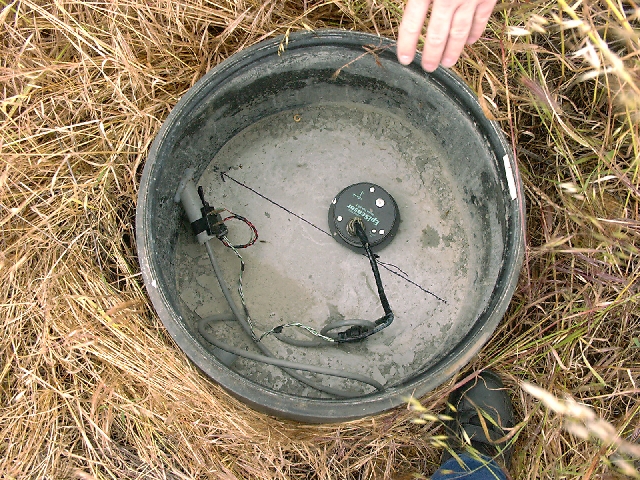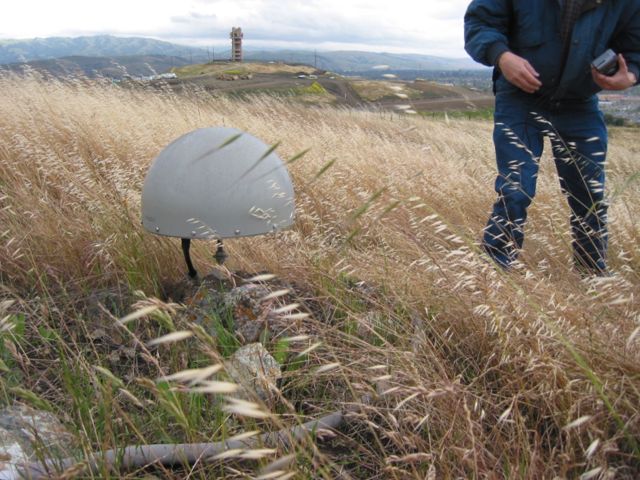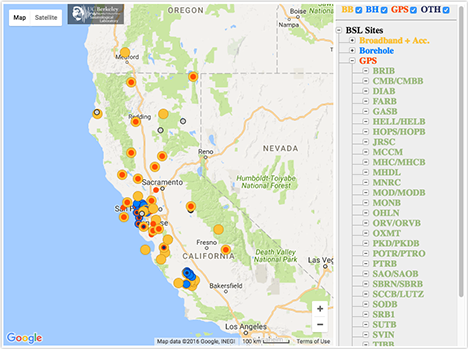SCCB - SCC Communications
We operate broadband and borehole stations under the network code BK. The Berkeley Digital Seismic Network (BDSN) is a regional network of very broadband and strong motion seismic stations designed to monitor regional seismic activity as well as provide high quality data. The Berkeley borehole stations have borehole geophones or other seismic sensors and may have other geophysical instrumentation.
BARD is our GPS network for monitoring crustal deformation across the Pacific-North America plate boundary and in the San Francisco Bay Area for earthquake hazard reduction studies and rapid earthquake emergency response assessment
| Station Name | SCCB (LUTZ) |
| In Operation | 1996-05-18 19:23:00 +0000 - Present |
| Latitude | 37.29 |
| Longitude: | -121.87 |
| Elevation: | 94.9629 meters |
| Instrumentation | Broadband GPS |
Location
The SCCB site is located at the Santa Clara County communications facility in south San Jose. This site is centrally located within the Santa Clara valley on a serpentine and Franciscan outcrop. Emergency response dispatchers and personnel are at the site around the clock. Power at the site is backed up by uninterruptible power supplies and diesel generators. This is also the location of the BARD station LUTZ.SCCB is one of currently two BDSN sites that consisting of a strong-motion sensor and Q730 datalogger. The HFN station RFSB has a surface strong-motion sensor and Q730 datalogger in addition to the borehole installation.
Network
Berkeley Digital Seismic Network (BK)Bay Area Regional Deformation Network (BARD)
Geology
Franciscan
Borehole Conditions
Construction at the site was limited to trenching from an existing concrete radio and microwave vault to a rock outcrop situated 100 meters from the building. By locating the seismometer outside the concrete building, free-field interference was minimized. A concrete pad was poured to level the seismometer at that location. A double shielded cable was used to connect the seismometer to the datalogger, in order to minimize RF pickup from the nearby emergency transmission equipment. Ferrite beads were added to the cable to further reject unwanted RF which could couple into the cable.GPS Monument Description
Threaded 5/8" rod cemented in bedrockTable of Seismic Instrumentation
| Sensor | Datalogger | SEED Channels | Location | |
| Accelerometer | Kinemetrics FBA ES-T Accel. (4 g max 5 v/g) | Q330HR-GFE | HN? | 00 |
| Auxiliary | AntennaCurrent | Q330HR-GFE | VE? | 00 |
| ClockPhase | Q330HR-GFE | LC?,VC? | 00 | |
| ClockQuality | Q330HR-GFE | LC?,VC? | 00 | |
| InputVoltage | Q330HR-GFE | VE? | 00 | |
| SystemCurrent | Q330HR-GFE | VE? | 00 | |
| SystemTemperature | Q330HR-GFE | VK? | 00 | |
| VCOValue | Q330HR-GFE | VC? | 00 |
GPS Instrumentation
| Receiver | Antenna | Radome | - | |
| GPS | SEPTENTRIO POLARX5 | ASHTECH ASH700936C_M | SCIS | - |
Waveforms and associated metadata, and GPS data, are available at the Northern California Earthquake Data Center (NCEDC).
Waveform Data
- BK Information Directory, including
- List of station locations
- List of available channels
- Instrument Response
- Querying the archives
- Download waveform data
GPS Data
- Site log: lutz.log
Data Type From To Low-rate raw --- --- Low-rate rinex 05/18/1996 present High-rate raw 5/18/1996 present High-rate rinex 5/18/1996 present
Noise Analysis
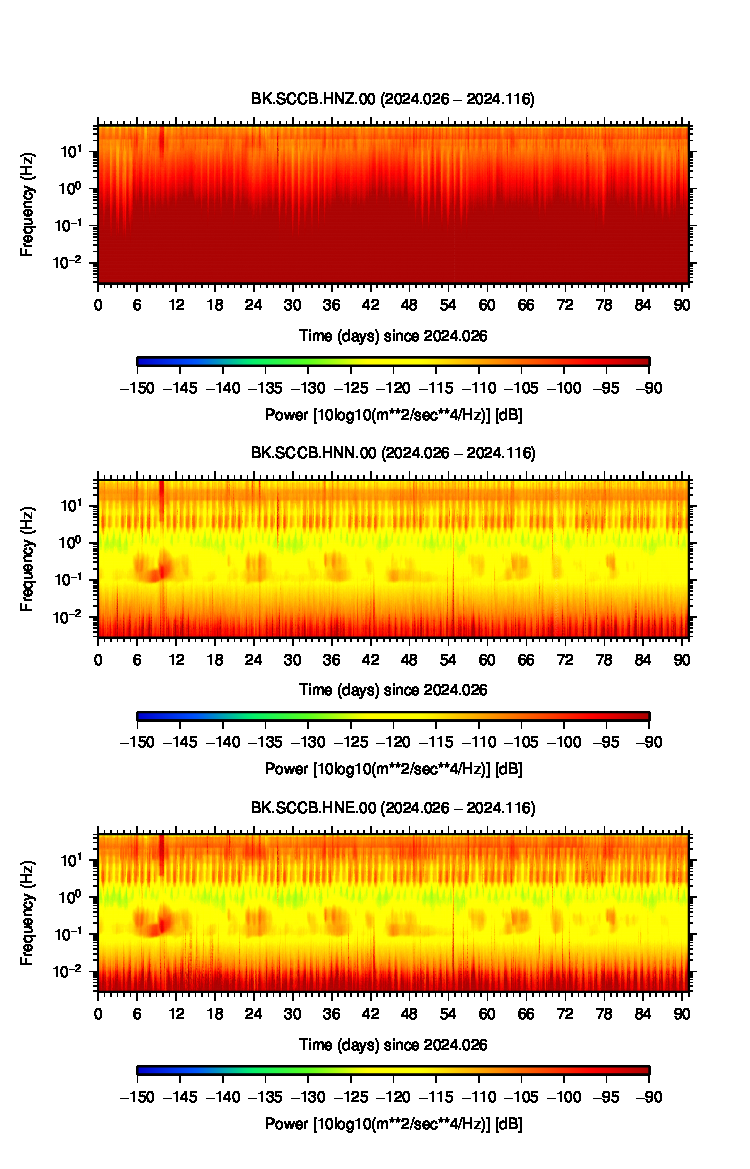 |
GPS Data Quality
Completeness
Data completeness is defined both as "Completeness of observations" and "Cycle slips per observation". "Completeness of Obs." is the number of epochs in the final RINEX file normalized to the expected number. This percentage will go down if time is missing from the RINEX file. "Cycle slips per Obs." is the total number of detected cycle slip normalized to the total number of observations in the RINEX file. This number will increase as the receiver loses lock on satellites more frequently.
| Previous Year |
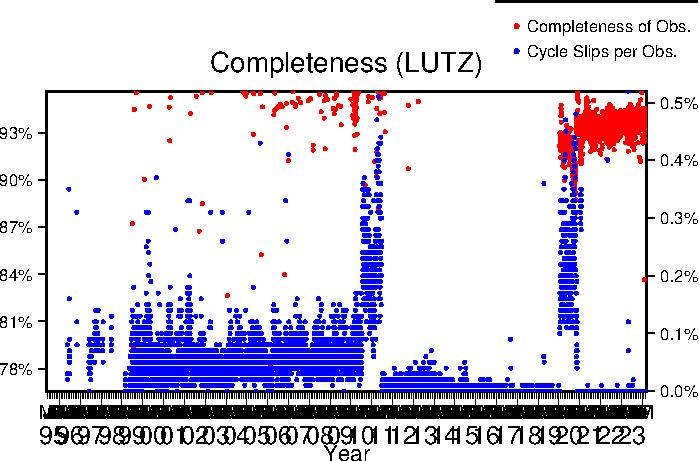 |
| Lifetime |
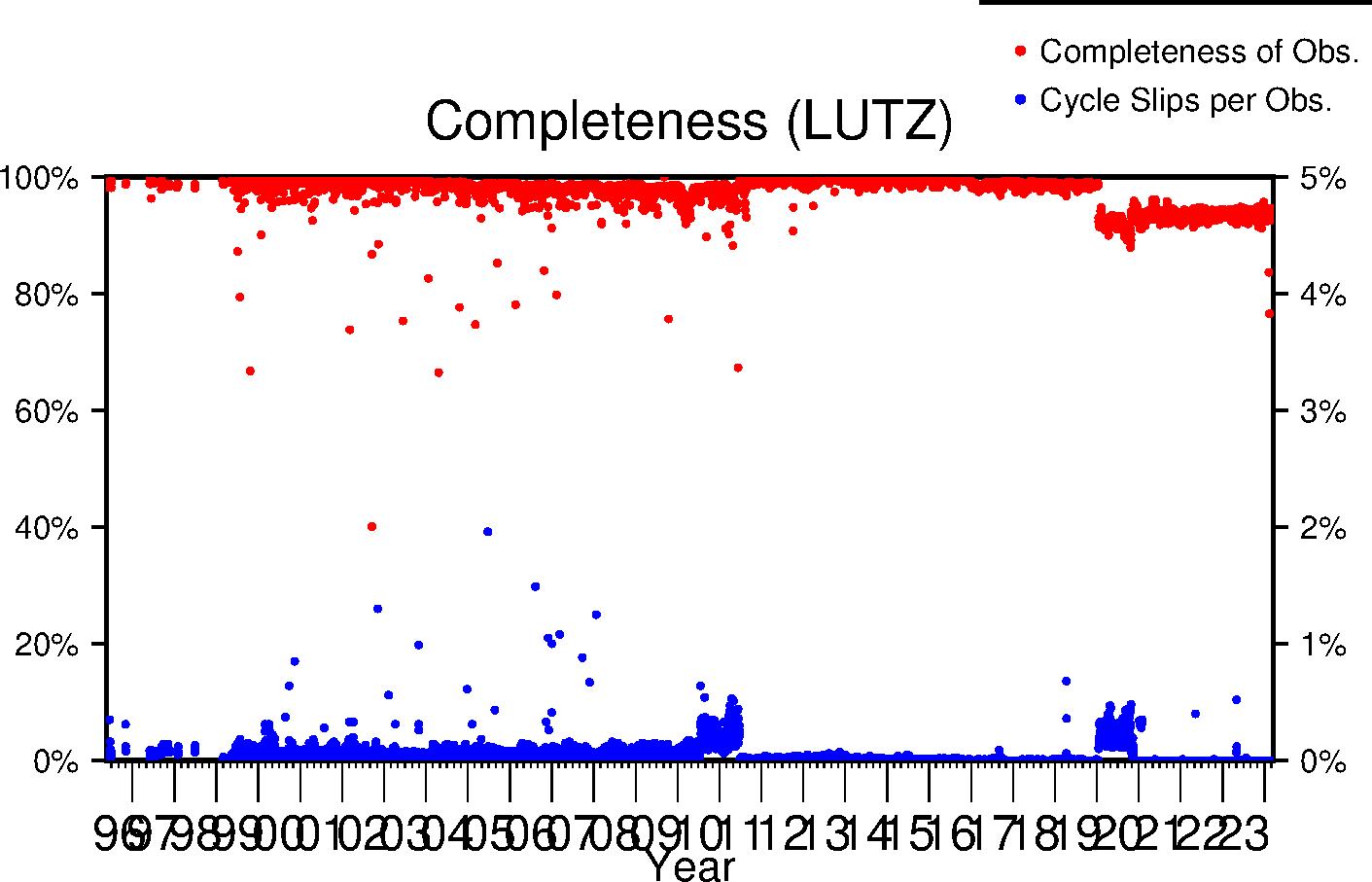 |
Multipath
The effects of multipath on the data are estimated by parameters for L1 and L2 (MP1 and MP2 respectively); see Estey and Meertens (GPS Solutions, 1999) for derivation. The daily value is the RMS of MP1 and MP2 throughout the day and for all satellites. Higher values indicate a greater prevalence and/or strength of multipathing, i.e. objects on the ground are providing multiple reflection pathways from the satellite to antenna.
| Previous Year |
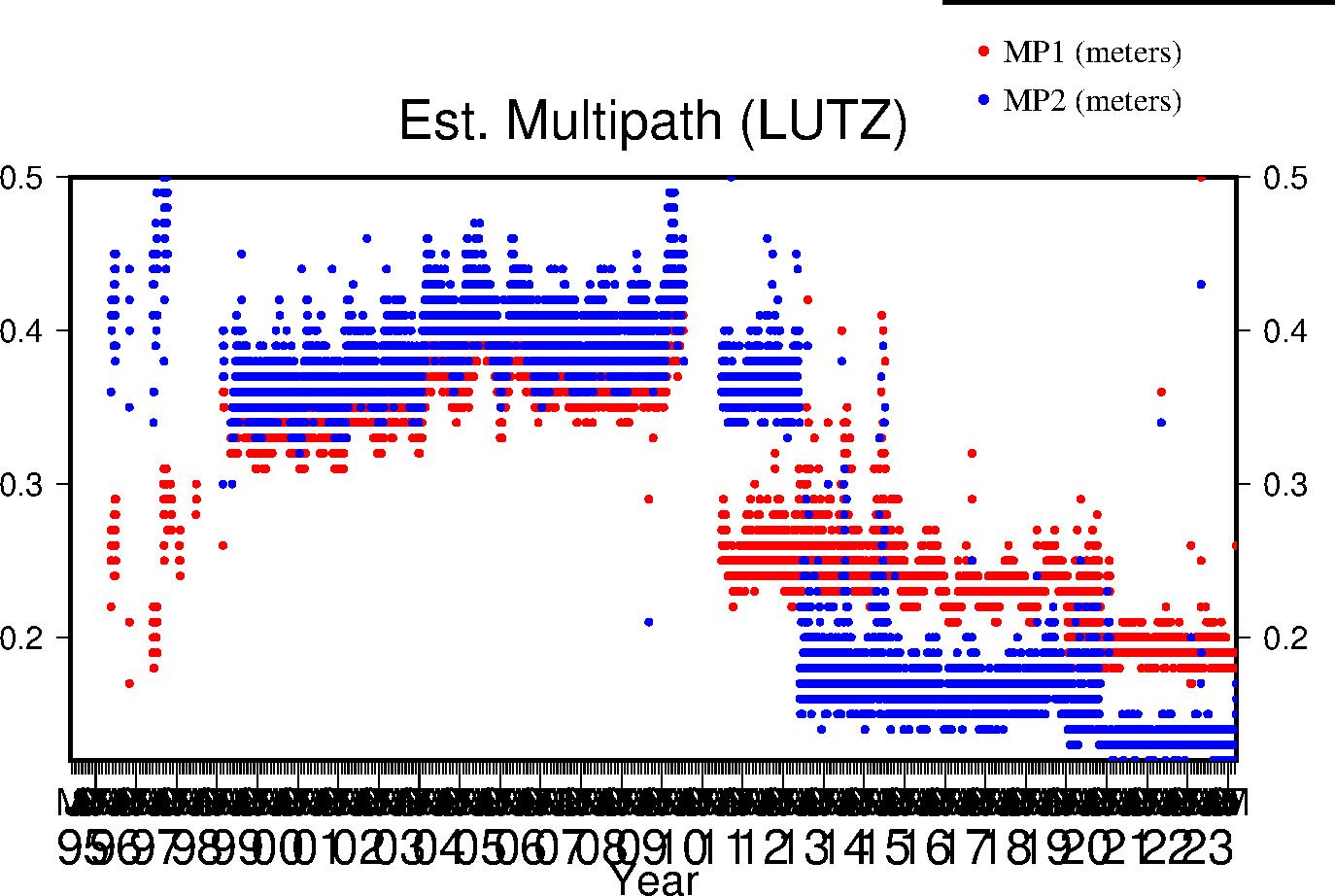 |
| Lifetime |
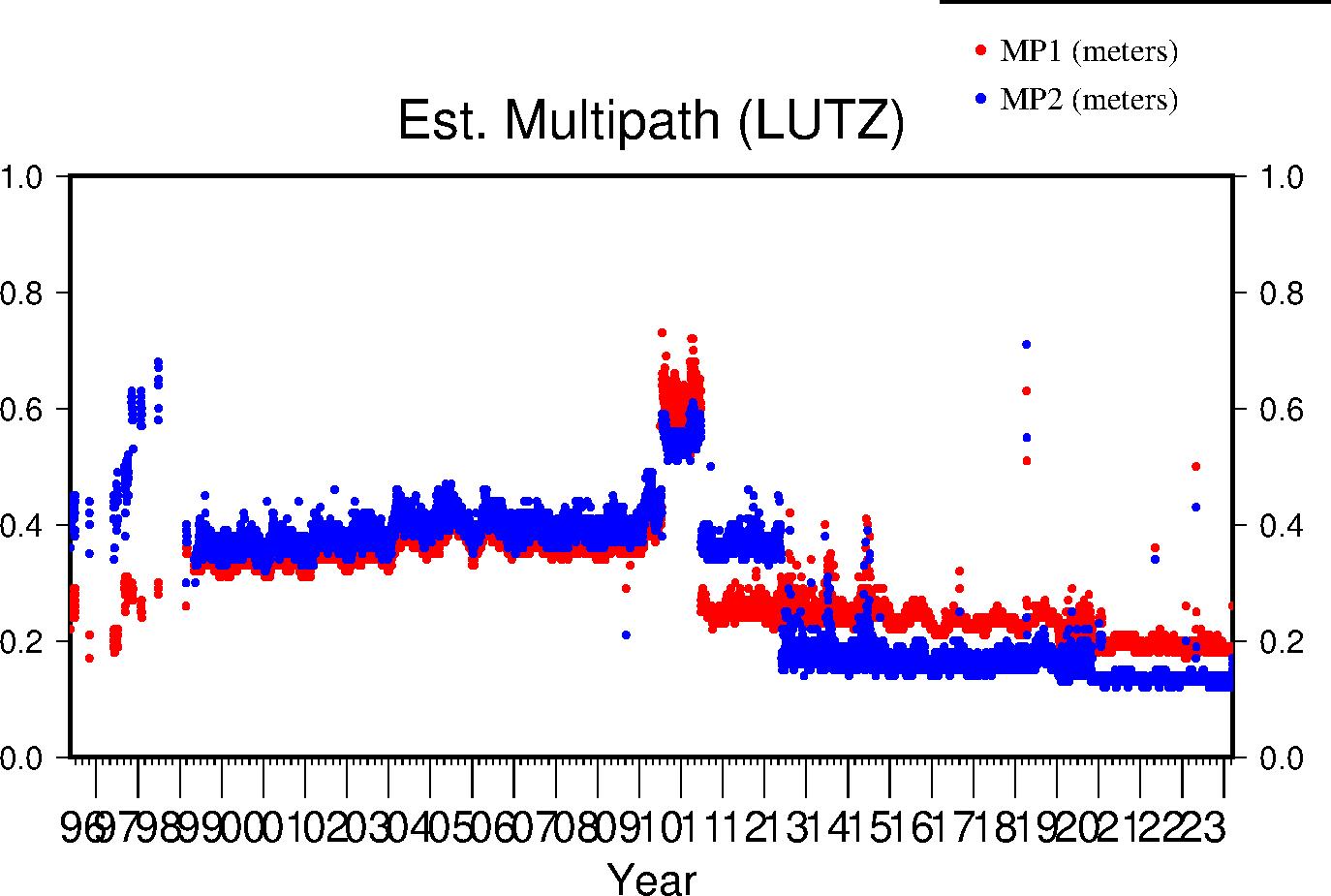 |
Signal-to-Noise Ratio
The Signal-to-Noise ratios are the mean values above the QC elevation mask for L1 and L2 respectively.
| Previous Year |
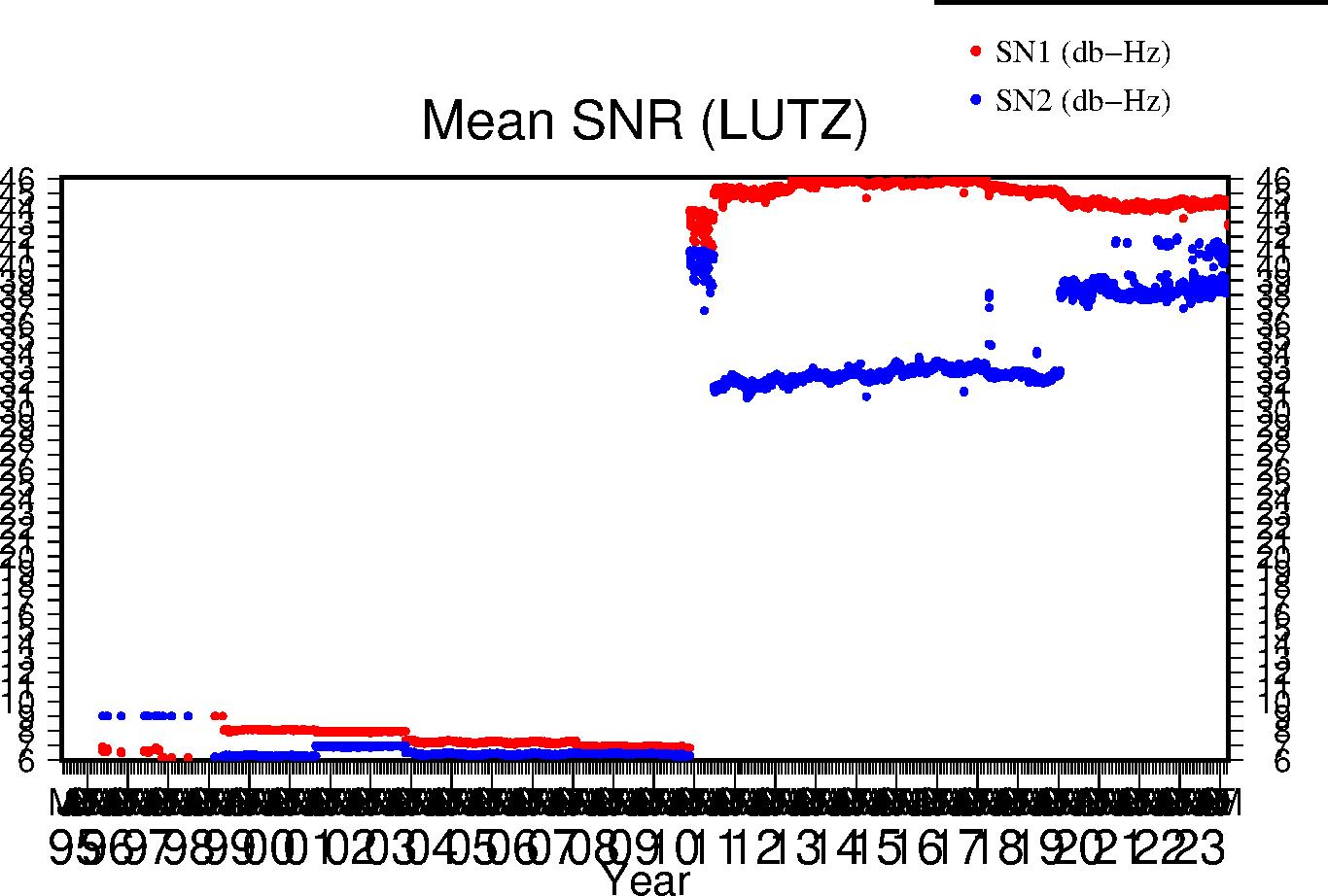 |
| Lifetime |
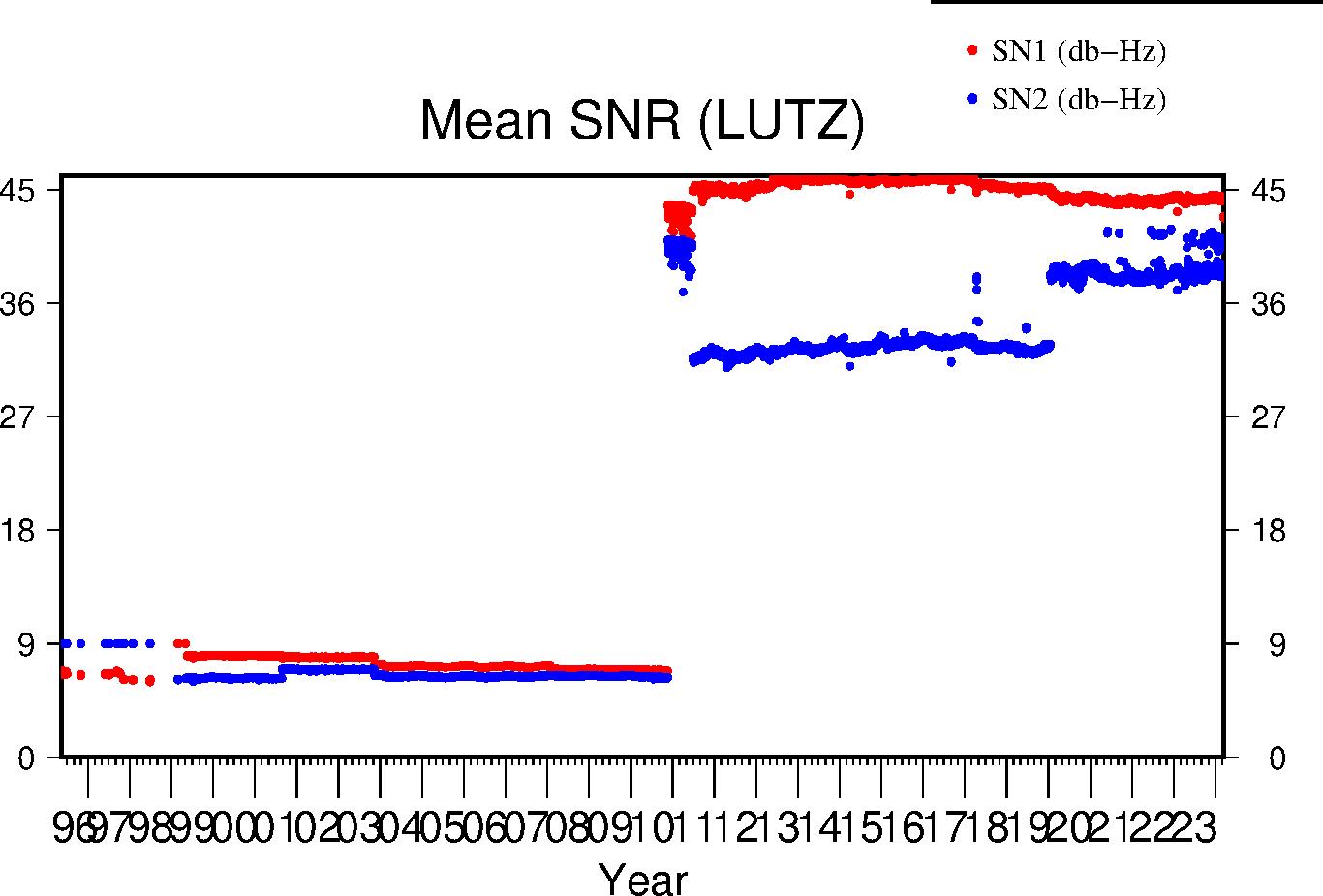 |
